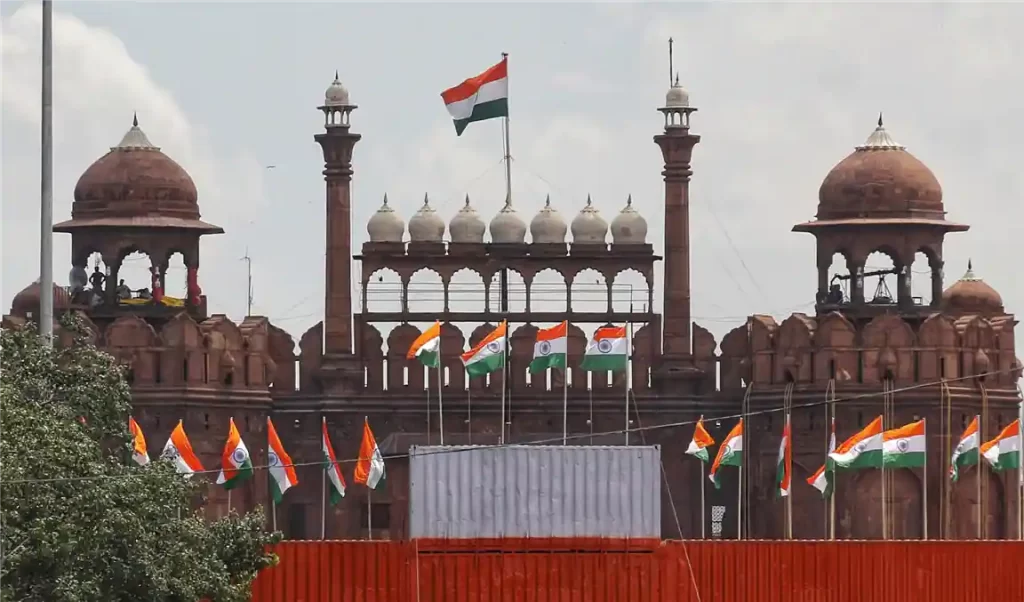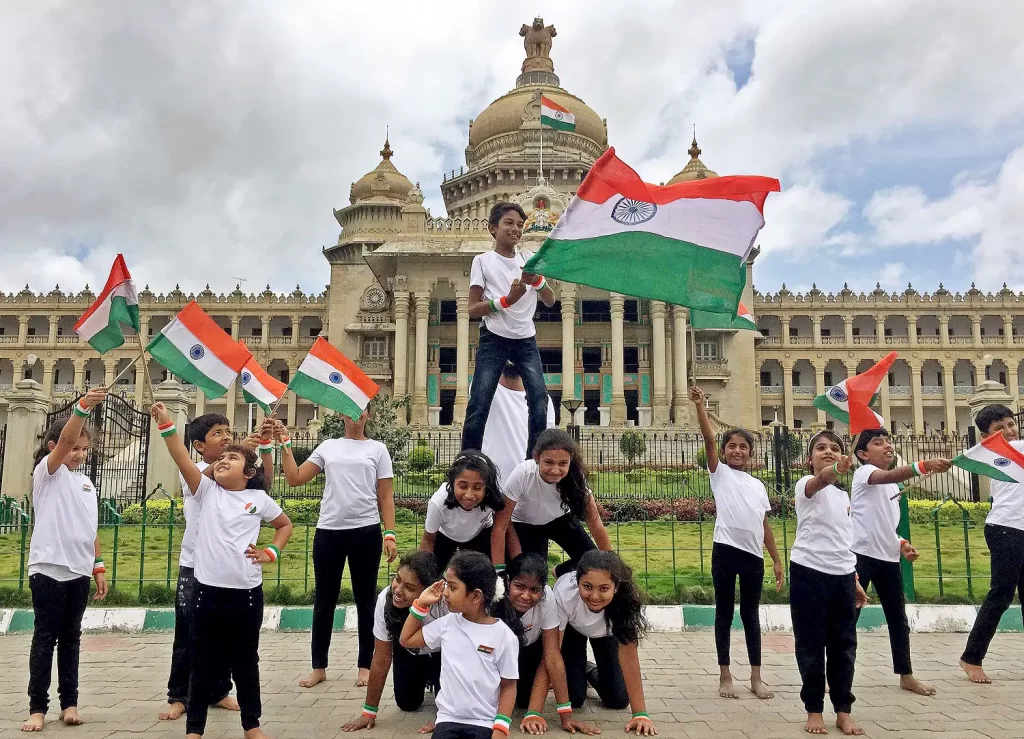- Private car and driver in Delhi / India
- +91-8447445445
- info@discoverindiabycar.com sugar.ankit@yahoo.com
 +91-9818434712
+91-9818434712
Independence Day

India celebrates Independence Day on August 15 every year as a public holiday to commemorate the country’s independence from the United Kingdom on that day in 1947, when the provisions of the Indian Independence Act took effect and gave the Indian Constituent Assembly legislative authority. After the adoption of the sovereign law Constitution of India on January 26, 1950 (celebrated as Indian Republic Day), the dominion prefix Dominion of India was replaced, although India retained King George VI as its head of state until it became a republic. India attained freedom after a movement for independence that was mostly peaceful resistance and civic disobedience.
Concurrent with India’s proclamation of independence was the division of British India into the Dominions of India and Pakistan, which was marked by brutal riots, numerous fatalities, and the displacement of almost 15 million people due to religious conflict. On August 15, 1947, Jawaharlal Nehru, India’s first prime minister, hoisted the national flag above the Lahori Gate of the Red Fort in Delhi. On each succeeding Independence Day, the current prime minister hoists the flag and delivers a speech to the nation. The entire ceremony is broadcast on Doordarshan, India’s national broadcaster, and it usually begins with some shehnai music by Ustad Bismillah Khan. India holds parades, rituals for raising the flag, and cultural events to commemorate Independence Day.
It’s a public holiday.
History
European traders had established outposts on the Indian subcontinent during the 17th century. With their superior military capabilities, the East India Company fought and subdued local kingdoms, rising to power by the 18th century. During the Indian Rebellion of 1857, the British Crown was able to fully regain control of India thanks to the Government of India Act of 1858. In the subsequent decades, India’s civic society progressively grew, most notably because of the 1885-founded Indian National Congress Party. Following World War I, the unpopular Rowlatt Act was passed, along with calls for Indian self-rule and colonial reforms like the Montagu-Chelmsford Reforms.

Divide and rule and independence
Jawaharlal Nehru delivered his speech, Tryst with Destiny, on the eve of India’s first anniversary of independence.Many Muslim, Sikh, and Hindu immigrants crossed the newly created borders in the months prior to independence.But, in Bengal and Bihar, where Mahatma Gandhi’s influence eased racial tensions, the bloodshed was restrained. In Punjab, where the borders cut the Sikh lands in half, there was widespread slaughter. Between 250,000 and 1,000,000 people perished in the fighting overall, on both sides of the new borders. Gandhi stayed in Calcutta during the Independence Day celebrations in an effort to put a halt to the slaughter.
Celebration

On August 15, 2020, Prime Minister Narendra Modi spoke to the nation during the 74th Independence Day celebration from the Red Fort’s ramparts in Delhi. All Indian states and union territories mark Independence Day, one of India’s three national holidays (the other two are Republic Day on January 26 and Mahatma Gandhi’s birthday on October 2). The Indian President delivers the “Address to the Nation” on the eve of Independence Day. The Indian flag being raised by the Prime Minister on the Red Fort’s ramparts in Delhi on August 15. The prime minister discusses significant topics, reviews the year’s accomplishments, and pushes for more progress in his speech. The leaders of the Indian freedom movement are honoured by him. “Jana Gana Mana,” the national song of India, is sung. Following the address, divisions of the Indian Military Forces and paramilitary organisations do a march past. Parades and pageants present images from India’s battle for freedom as well as its rich cultural heritage. Similar occasions occur in state capitals where the national flag is raised by the Chief Ministers of each state, followed by parades and pageants. The State’s Governor raised the National Flag over the State Capitol until 1973. M. Karunanidhi, the Chief Minister of Tamil Nadu, raised the matter with then-Prime Minister Indira Gandhi in February 1974, requesting that the Chief Ministers be given the same Independence Day privileges as the Prime Minister. On Independence Day, Chief Ministers of the individual states have been permitted to hoist the flag since 1974.
Throughout all of the nation’s governmental and non-governmental institutions, ceremonies to hoist the flag and cultural events are held. Flag-raising ceremonies and other cultural activities are held at schools and institutions. Governmental and non-governmental organizations both use paper and balloon decorations to embellish their interior spaces. Major government buildings are frequently decorated with lights as well. Kite flying enhances the event in Delhi and some other places. Many national flags of various sizes are displayed to symbolize allegiance to the nation. Residents decorate reproductions of the tricolor on their clothing, wristbands, automobiles, and home furnishings. Over time, the focus of the holiday has shifted from nationalism to a more inclusive celebration of everything India.
In areas with higher populations of Indian immigrants, the Indian Diaspora commemorates Independence Day with parades and pageants. The 15th of August has become “India Day” in several areas, including New York and other US cities, among the Diaspora and the local community. India Day is observed by pageants on August 15 or a nearby weekend day.








